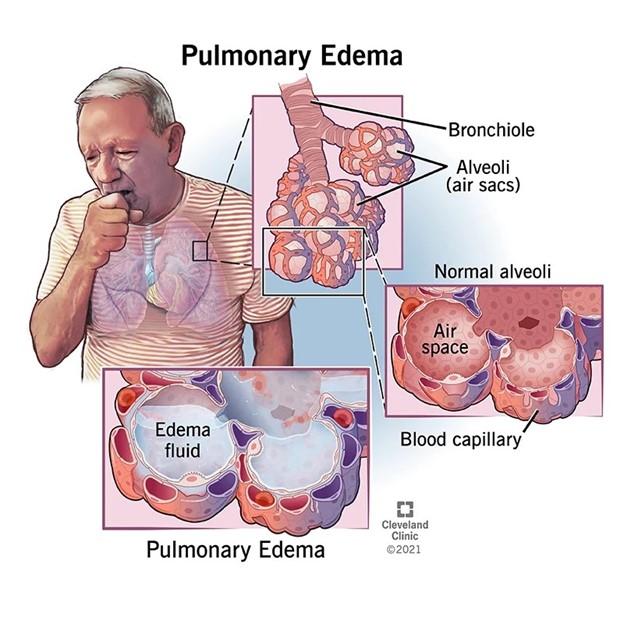A nurse is collecting data for a client who is receiving enteral tube feedings. The nurse should identify that which of the following findings is a manifestation of fluid overload?
Weight loss
Decreased blood pressure
Crackles heard in the lungs
Decreased skin turgor
The Correct Answer is C
Fluid overload refers to an excess volume of fluid in the body, which can occur as a result of various factors, including excessive fluid intake or inadequate fluid removal. Crackles heard in the lungs, also known as rales, can indicate fluid accumulation in the lungs, a condition known as pulmonary edema. It is a common manifestation of fluid overload and can be detected through auscultation of the lungs.

Weight loss is typically associated with inadequate calorie or nutrient intake, rather than fluid overload.
Weight loss is typically associated with inadequate calorie or nutrient intake, rather than fluid overload.
Weight loss is typically associated with inadequate calorie or nutrient intake, rather than fluid overload.
Nursing Test Bank
Naxlex Comprehensive Predictor Exams
Related Questions
Correct Answer is D
Explanation
Epinephrine is a medication commonly used to treat severe allergic reactions, also known as anaphylaxis. One of the hallmark signs of anaphylaxis is difficulty breathing or shortness of breath. Epinephrine works by constricting blood vessels, relaxing smooth muscles in the airways, and reducing swelling, which can help relieve the symptoms of respiratory distress. Epinephrine is not typically used to treat nausea, hyperglycemia, or hand tremors.
Nausea can be caused by various factors and is usually managed with antiemetic medications. Hyperglycemia, which refers to high blood sugar levels, is typically managed with appropriate diabetes management, including insulin or other glucose-lowering medications. Hand tremors can have different underlying causes, and their treatment depends on the specific etiology.
Correct Answer is ["B"]
Explanation
a. Asking other group members to limit their speaking may place unnecessary pressure on the quiet client and make them feel singled out. The goal is to create a supportive environment where the client feels comfortable contributing when they are ready. Limiting the other group members' participation does not address the individual needs of the client who is silent.
b.Some clients may need extra time to process information or formulate their responses, particularly in a group setting where they might feel overwhelmed or anxious. Allowing the client extra time respects their pace and encourages participation without pressuring them.
c.Appointing the client to lead the discussion if they cannot contribute are not appropriate actions. These approaches can increase the client's discomfort and create a negative atmosphere, which goes against the principles of group therapy. It is important to foster an inclusive and supportive environment that encourages participation at each person's pace.
d.Telling a client to leave the group if they cannot contribute is not appropriate action. These approaches can increase the client's discomfort and create a negative atmosphere, which goes against the principles of group therapy.
Whether you are a student looking to ace your exams or a practicing nurse seeking to enhance your expertise , our nursing education contents will empower you with the confidence and competence to make a difference in the lives of patients and become a respected leader in the healthcare field.
Visit Naxlex, invest in your future and unlock endless possibilities with our unparalleled nursing education contents today
Report Wrong Answer on the Current Question
Do you disagree with the answer? If yes, what is your expected answer? Explain.
Kindly be descriptive with the issue you are facing.
